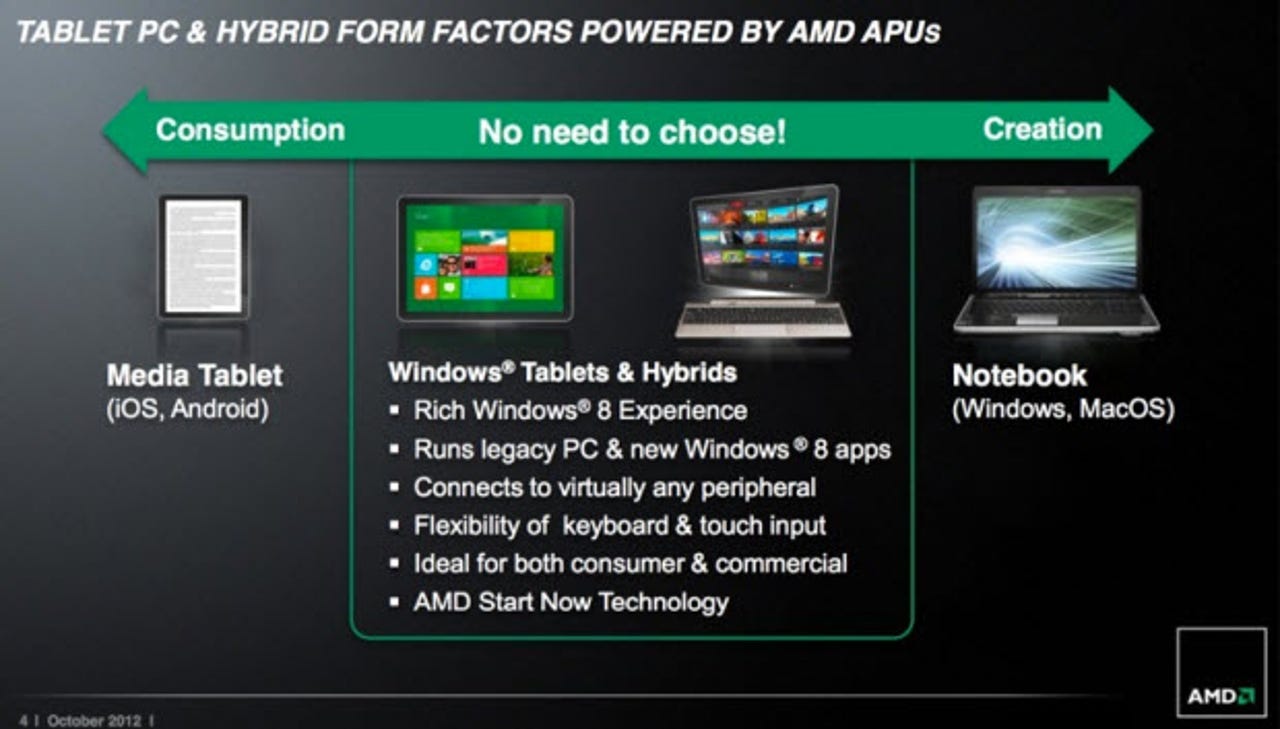AMD Z-60 'Hondo' APU unveiled: pictures


AMD's focus with its Z-60 APU is to deliver products that can handle both content consumption and creation.
The Z-60's dual-core 1GHz CPU and Radeon HD 6250 GPU offer enough power for tablets to take on this dual personalities in both consumer and enterprise Windows 8 powered hardware.
Image source: AMD.
The Z-60 combines a dual-core 1GHz CPU, 80 core GPU, and 1MB of L2 cache in a package that only consumes 4.5W. This figure might be higher than the 1.7W that Intel claims for its new "Clover Trail" silicon, but it is much better than previous-generation AMD APUs.
The Z-60 also features support for USB 3.0 and 1080p HD screen resolution.
Image source: AMD.
Power consumption of Z-60 powered hardware ranges from a minuscule 0.08W when the device is in S3 sleep mode to 4.79W when playing back HD video content.
Z-60 promises 10 hours of Windows use (as measured by AMD), six hours of video playback, eight hours of web browsing, and two weeks of standby in S3 sleep mode.
Image source: AMD.
AMD's Start Now technology, which is compatible with both Windows 8 and Windows 7, allows a system to resume from sleep in as little as two seconds, and boot into Windows in 25 seconds.
This might be slow when compared to an iPad, but it's fast when you consider that these are tablets running Windows.
Image source: AMD.
AMD's focus with the Z-60 is to deliver solid performance and long battery life, and do so at a cheaper price point than Intel can do with its "Clover Trail" hardware.
AMD claims that it's powerful enough to play Call of Duty: Modern Warfare 2 and Orcs Must Die at 1024 x 768 resolution while still delivering 30 frames per second.
Image source: AMD.